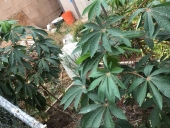

Mike Barkley wrote:Do you have varroa mites, hive beetles, or any other bee pests or diseases common in your area? Any reason to think something might be wrong? Do you know how to deal with any of those potential problems? It's hard to give a good answer to your question from so far away & not knowing your particular situation. My guess is it's probably best to leave them alone.

Joylynn Hardesty wrote:Oh, good! No need for emergency feeding of sugar. Here, a newly started hive might starve over winter without help. Sugar isnt a good solution, but dead bees is a terrible outcome.
Joylynn Hardesty wrote:Is your weather turning into spring or fall?